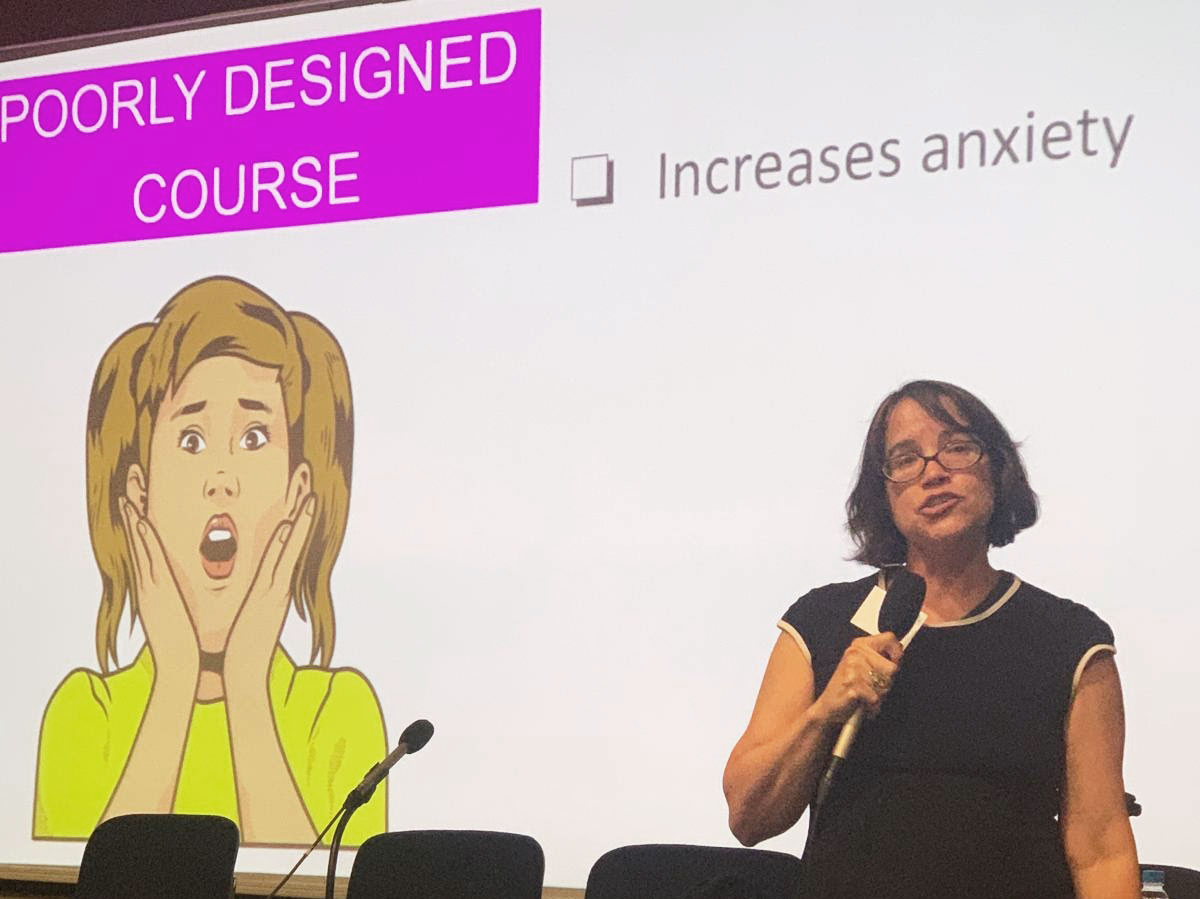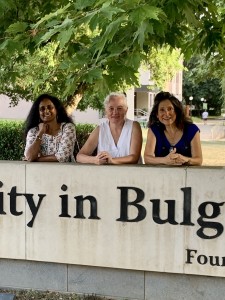Being separated by thousands of miles and multiple time zones hasn’t stopped Kenyon students from pursuing meaningful collaborations with their peers abroad.
In one experience that crossed national boundaries and academic disciplines, Professor of Sociology Jennifer Johnson’s “Sociology of Food” class last fall teamed up with students learning about biology at Oberlin College and nutrition at The American University in Cairo. Together, they created public service announcements related to nutrition and public health.
It’s a global approach to learning that a growing number of faculty are embracing. Last semester, Kenyon classes in political science, psychology and dance were among those that incorporated interactions with students in other countries as part of the syllabus.
“The idea is for instructors to meet and find ways to help their students connect across cultures, across disciplines,” Johnson said. “The opportunity for us, in a very small place like Gambier, to connect with colleagues elsewhere and help our students to connect with each other was fun, too.”
A global alliance
Many of these partnerships are facilitated by the Global Liberal Arts Alliance, a consortium of 30 colleges and universities around the world that advance a liberal arts education. Known as Global Course Connections, the initiatives are described by the alliance as a “high impact, low-cost approach” to exposing students to global perspectives. Faculty are able to find partners through the organization and then meet with them in person during a summer workshop.

Professor of Psychology Irene López, who leads those workshops, has long been an advocate and practitioner of these educational experiences. A former Kenyon liaison to the Global Liberal Arts Alliance, she has conducted her own research and co-edited a textbook on global learning that includes a number of case studies from the College. What she found was impressive.
“These courses increase global curiosity. They increase a sense of students feeling connected with another person around the world,” she said. “When done well, students feel like the courses are really inspiring and meaningful. And we had a number of students who continued having friendships with students that they connected with.”
There are challenges involved in these partnerships, to be sure. Time differences, for example, can make meeting synchronously during class difficult. But the advantages are overwhelming, said López, whose “Latino Psychology” class last semester worked with students at Universidad San Francisco de Quito in Ecuador.
Lasting benefits
Just ask Kayla Blythe ’25, a sociology and dance major who took Johnson’s sociology course. She particularly enjoyed discussing cultural norms with college students half a world away.
“I was definitely a little nervous at first. What does it look like to connect with other students on the other side of the world?” she said. “It ended up being a really fun and exciting way to engage with the material.”
The interactions — in which students set up and ran small-group meetings outside of class to work on their public service announcements — also helped develop soft skills in communication, logistics, problem-solving and teamwork, Blythe said.
“It was something I could bring up in job interviews — times when I worked in a team or a challenge I overcame,” she said. “This was a really unique experience to talk about.”
Expanded offerings
In recent years, Kenyon faculty members have paired up with educators in places at a considerable distance to Gambier, such as Saudi Arabia and Greece.

Last semester, students taking “Immigration, Citizenship and National Identity” with Assistant Professor of Political Science Nancy Powers ’83 compared national views on immigration with peers in Ecuador. And those enrolled in choreography with Professor of Dance Balinda Craig-Quijada worked with students in Pune, India.
For her class, Craig-Quijada teamed up with Professor Priya Joshi from Flame University to develop a project bringing awareness to how movement is culturally influenced. Students used social media to conduct “get-to-know-you” interviews with each other and choreographed a solo that incorporated specific movements and music shared by their overseas partner. The course culminated with an online meeting — despite a time difference of more than nine hours — where students got to watch each other’s performances.
Craig-Quijada said the cultural learning facilitated by these sorts of international projects have so many important benefits — both for students and faculty.
“The five Global Course Connection projects in which I have participated have invigorated my teaching,” Craig-Quijada said. “Each connected project imprints our learning and teaching with collaboration and lasting international connectivity.”
